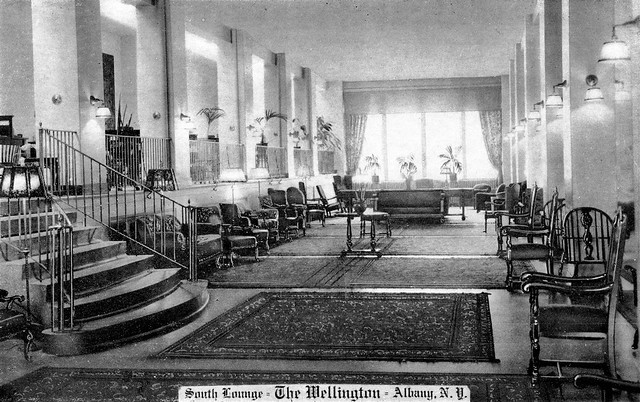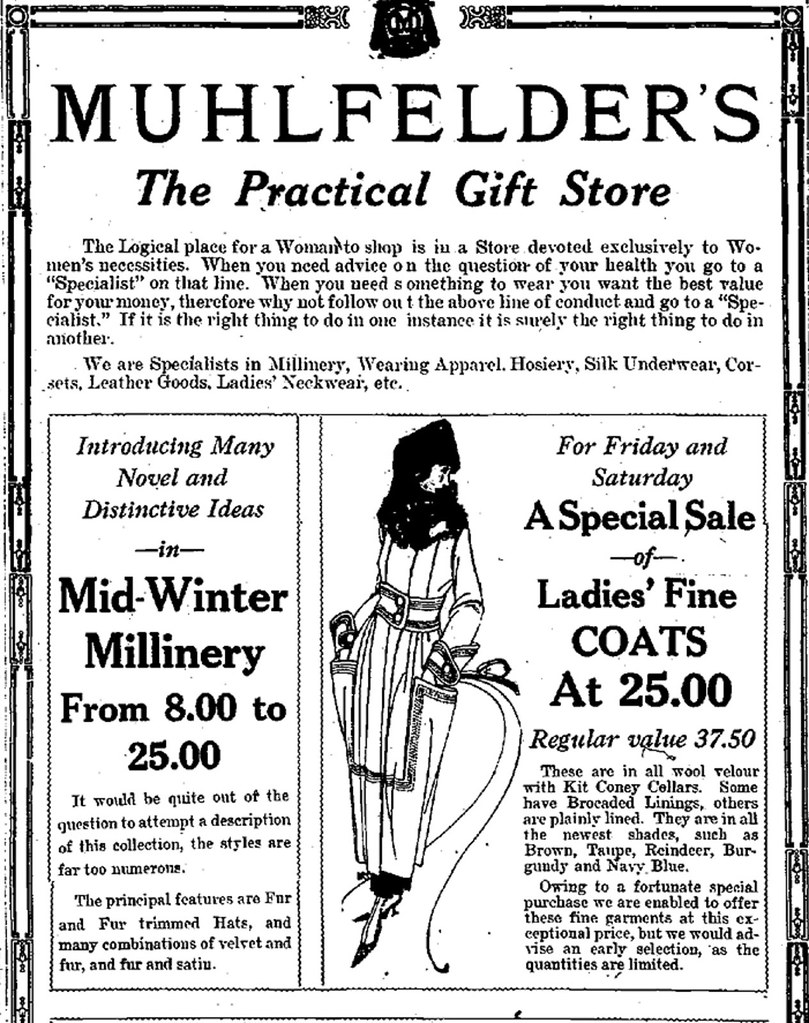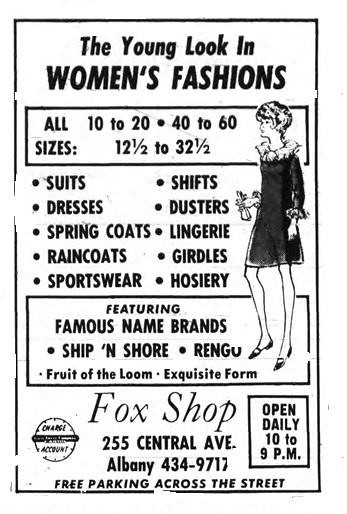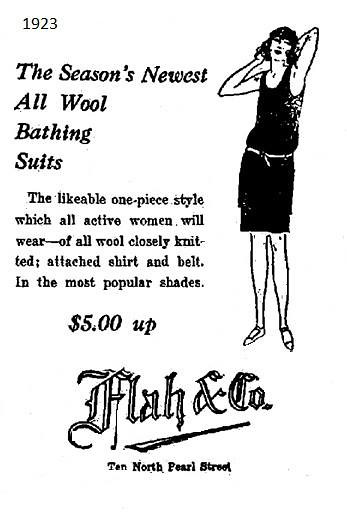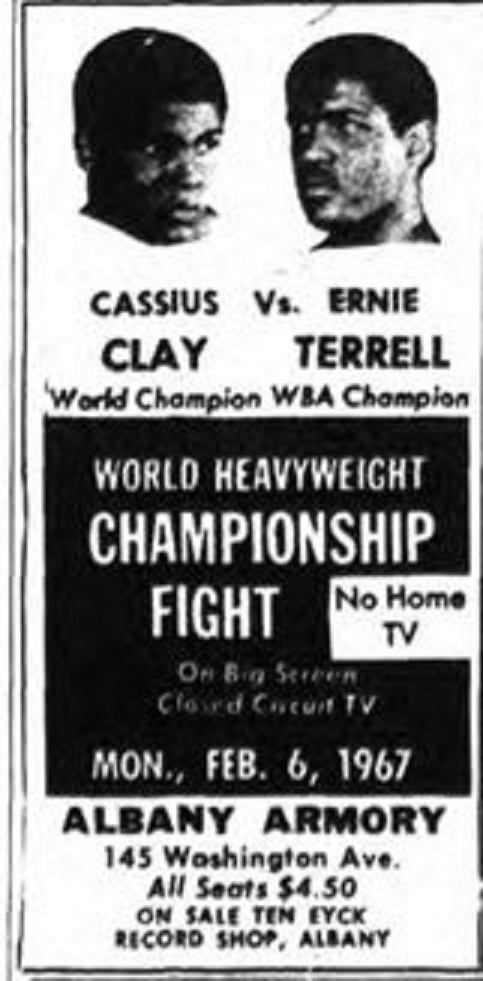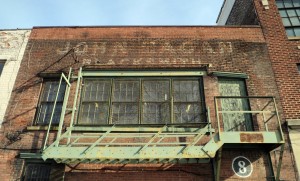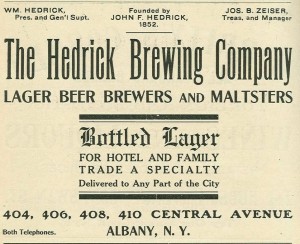A) Locations on my Tour
- Henry Johnson Memorial – My walking tour starts off at this memorial for Sergeant Henry Johnson. Sergeant Johnson was active during World War I. He moved to Albany as a teenager. He enlisted for the Army and following World War I was considered a war hero. He died in 1929. Johnson was awarded the Purple Heart by President Clinton in 1996.
- Washington Ave Armory – The next stop on the tour is the Washington Avenue Armory. The Armory was built in 1890 for the 10th Battalion of the New York State National Guard. It eventually became home to several basketball teams before falling into disuse. In 2004 the Albany Basketball and Sports Corporation purchased the Armory and renovated it.
- George Washington Travels through Albany – My next stop is a marker on Washington Avenue. George Washington traveled down Washington Avenue during his tours of the the Mohawk Valley in 1782 and 1783. It is on Washington Avenue near Swan Street.
- USS Slater – The next stop is the USS Slater. The former USS Slater is now the Destroyer Escort Historical Museum. There are tours of the ship from April through November.
- Schuyler Mansion – Schuyler Mansion was home to Revolutionary War hero, Senator, and entrepreneur Phillip Schuyler. Him and his wife, Catherine Van Rensselaer, came from powerful Dutch Families. His daughter Elizabeth married Alexander Hamilton. The wedding took place in the mansion. There are tours of the mansion year round.
1. Ohlhous, Howard C. “The Battle of Henry Johnson Marker.” The Historical Marker Database. May 18, 2011. Accessed February 29, 2016. http://www.hmdb.org/marker.asp?marker=42675.
2. “About the Armory.” The Armory. 2014. Accessed February 29, 2016. http://www.albanyarmory.com/about/.
3. “Historic Markers.” NYS Museum: Historic Markers. May 5, 2005. Accessed February 29, 2016. http://www.nysm.nysed.gov/historicmarkers/hisaction.cfm.
4. “Destroyer Escort Historical Museum.” USS Slater. Accessed February 29, 2016. http://www.ussslater.org.
5. “Schuyler Mansion Historic Site.” New York State Parks. 2016. Accessed February 29, 2016. http://nysparks.com/historic-sites/33/details.aspx.
B) Google estimates my tour will take a total of 48 minutes.
C) The organizing theme of my tour is Albany history, specifically Albany’s military history. I am looking for places that can show Albany’s military history as well as how it can connect to American history in general. The audience for my tour is probably a slightly older audience. I would not say it is exclusive to older people, but I would say that an older person would probably be the average member of my audience. I could also see this being an elementary school field trip, but as a general audience member I would stick with males who are out of school. I would say my average audience member would be a 25+ male. I feel that teenagers may be bored by some things on this tour, although that is not definite. I feel males would enjoy the war elements of the tour more than females. The big takeaway I am hoping would come from going on my walking tour is a better sense of Albany’s history overall. I feel like after going on my walking tour you would not only learn a lot more about Albany’s own history, but you would also learn about Albany’s spot in the history of the United States. The overarching theme of my tour is the militaristic hot spots of downtown Albany. There are many important spots in Albany that have a lot of value historically. George Washington rode down these streets and Alexander Hamilton was married downtown. Early America and Albany’s history are intertwined in many ways and that is a main point I want to come out during my walking tour. Each of my locations is a piece of Albany history, but also plays some sort of role in American History and that is how each of my locations is connected to each other. They are not all specifically related time wise or subject wise, but overall the theme of Albany and American history intertwining connects every piece of my map.
D) USS Slater
The first image is a photo of the USS Slater from Flickr. This photo has a copyright attached to it and is not in the public domain. The USS Slater is one of the stops on my walking tour of Albany.
The second image is a photo of the Schuyler Mansion in downtown Albany. It was also found on Flickr. This photo falls into the category of Creative Commons.
E) Three additional questions I need to research to finish my project:
- Who was Phillip Schuyler and what role did he play in the Revolutionary War?
- What role did Henry Johnson play in World War I and why was he awarded the Purple Heart by Bill Clinton?
- What exactly did the USS Slater do and when was it active?
